Exes Digital Pantograph Design

This is Exes.

What I love about the design is the combination of straight and curved lines. Not only that, but the curved lines are echoed to make an even bigger impact. The straight lines give an overall argyle effect, making triangle and diamond shapes emerge.


The result of the straight and curvy lines is a unique texture that employs a bit more "negative" space built into the design than a lot of my other designs.

Technically speaking, the stitch-out is easy. You will have to offset or "stagger" every other row by 50%.

Here are my specifics using a baby-sized sample in the photos (45" x 50" quilt size):
Row height: 4"
Gap: 0"
Pattern height: 4"
I use an Intellquilter as my computer system, so your terms might differ. You do not have to adjust the space between rows as using the offset of every other row will prevent any overlapping.
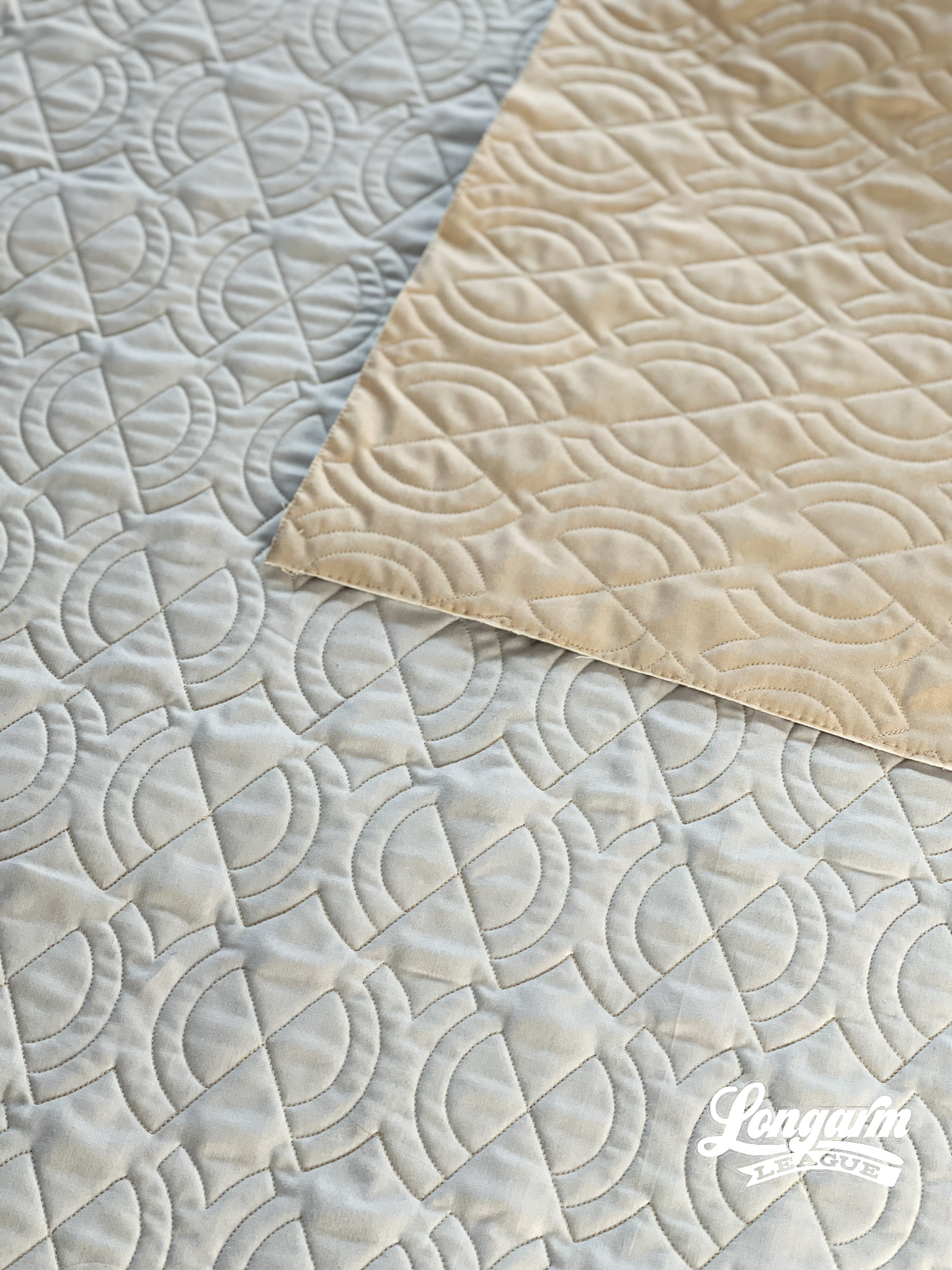
There is a decent amount of backtracking involved in this design. I didn't find it troublesome as I was stitching it out. You can ...
Mister Marbles Digital Pantograph Design
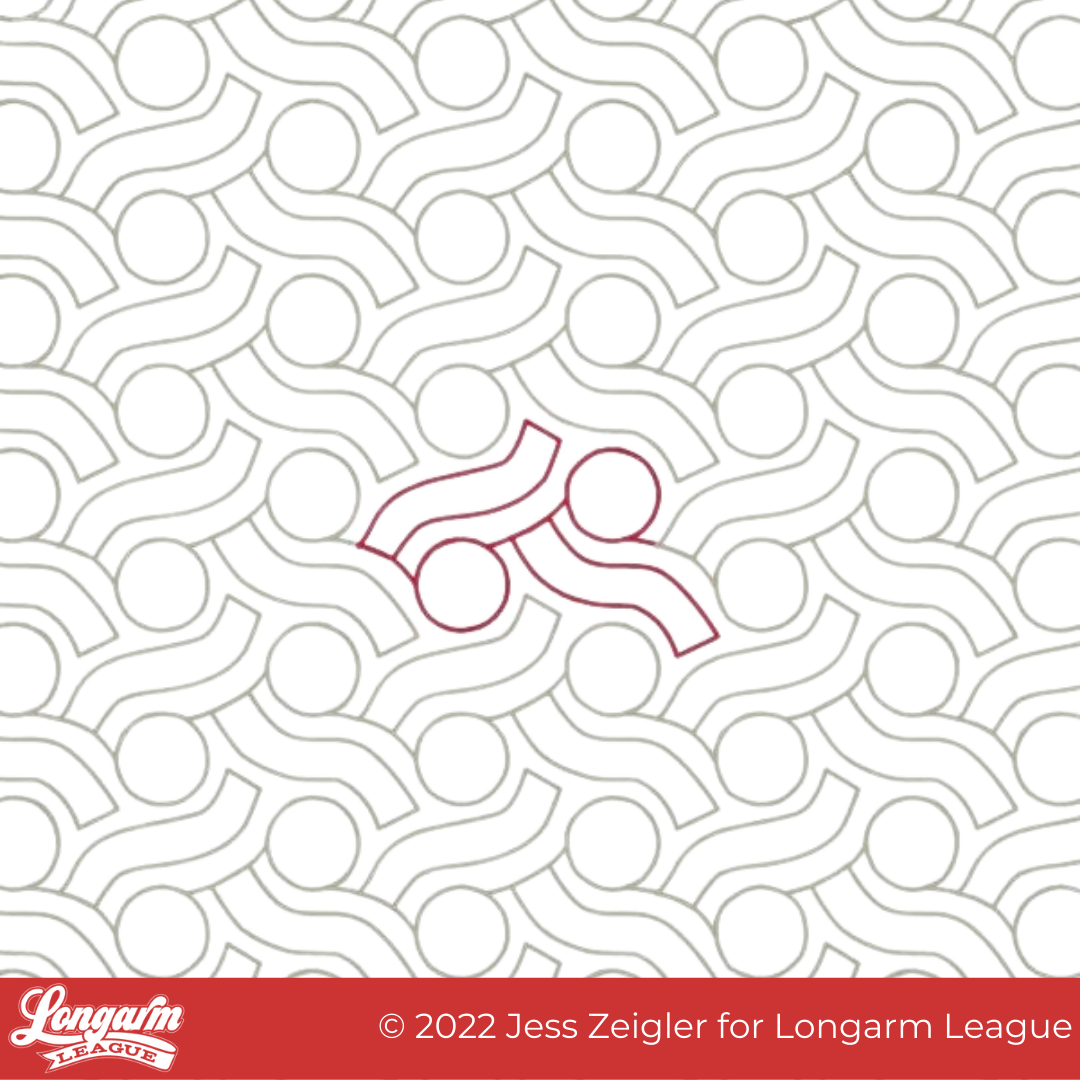
Mister Marbles is a fun-time pantograph when your top needs some extra texture, movement, and pizzazz!

When I look at the design, I think of a marble maze or marble run game. More on the name later, it gets much more nerdy, I promise.

I think this design would look great on quilt tops that are modern, for kids, or have fun and festive fabrics.
The movement is subtle, but it's still there.
This one has some wiggle room when you're stitching out the rows, so that's nice! It makes it a bit more user friendly than some of my other trickier designs.
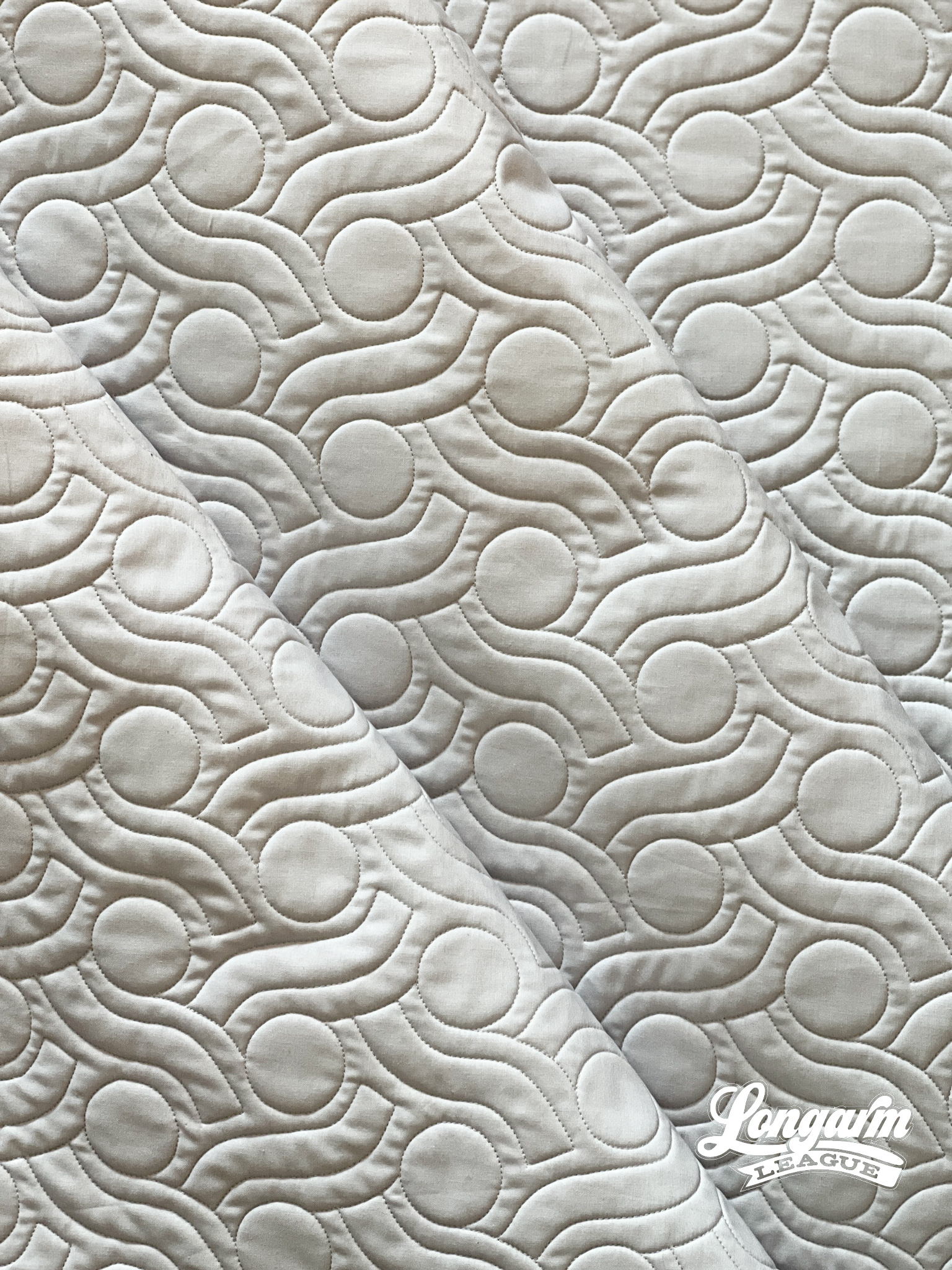
There is minimal backtracking involved with this design, see the video of the stitch path at the top of this post, it's very doable.
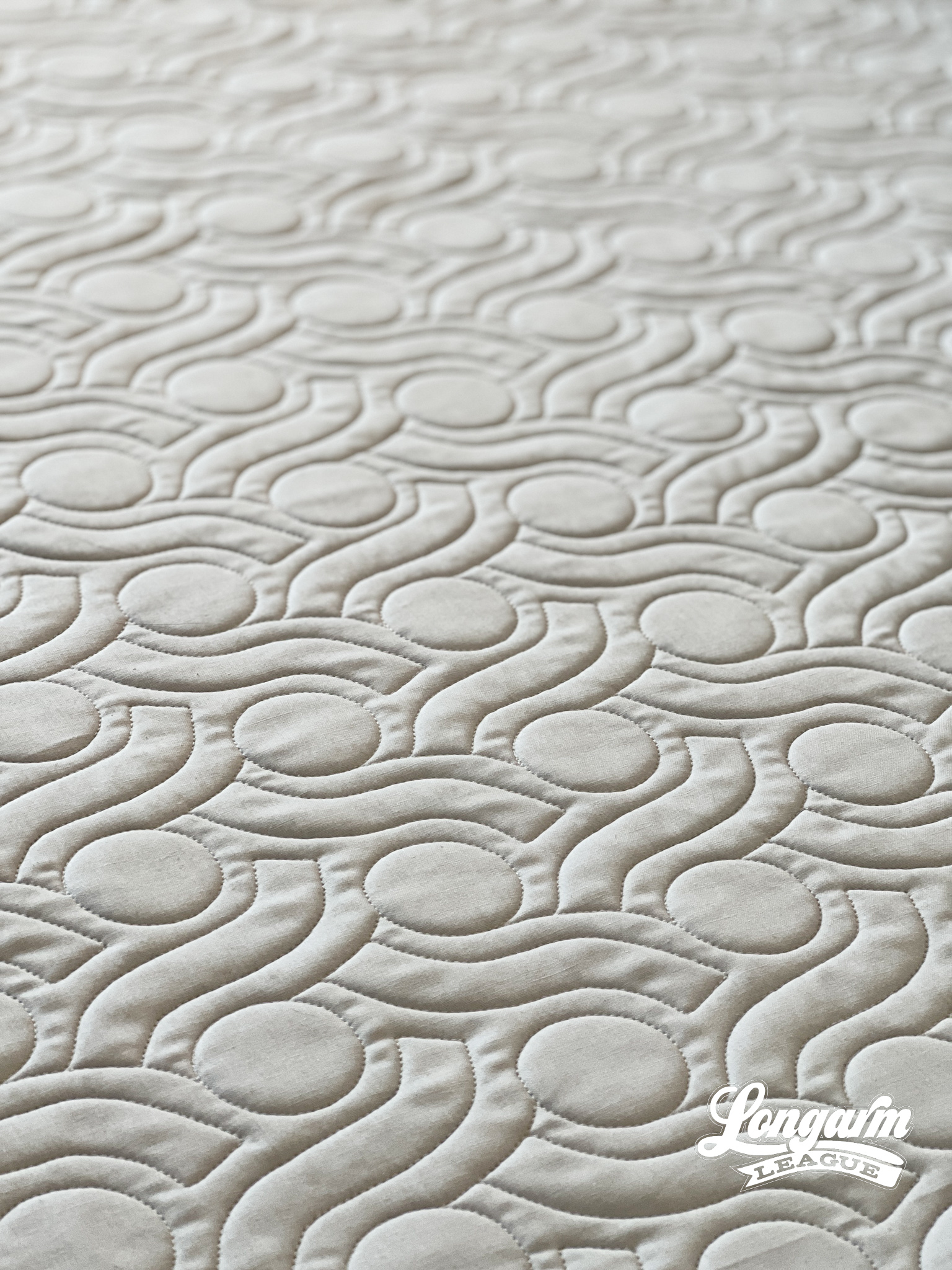
Here are my specifics using a baby-sized sample in the photos (45" x 50" quilt size):
Row height: 3.5"
Gap: -1.167"
Pattern height: 4.667" (this is the total span of the design from the top to the bottom of the repeat)
I use an Intellquilter as my computer system, so your terms might differ.

With th...
Thread Garden Digital Pantograph

I'm going to be honest and let you know that this is likely the only whole garden you'll ever see me cultivate. The two "plants" I have in my house are plastic. I tell myself it's because of the naughty cats.
I know, I know! So many quilters also love to garden, so I feel like these are fighting words. But, I gotta be me!
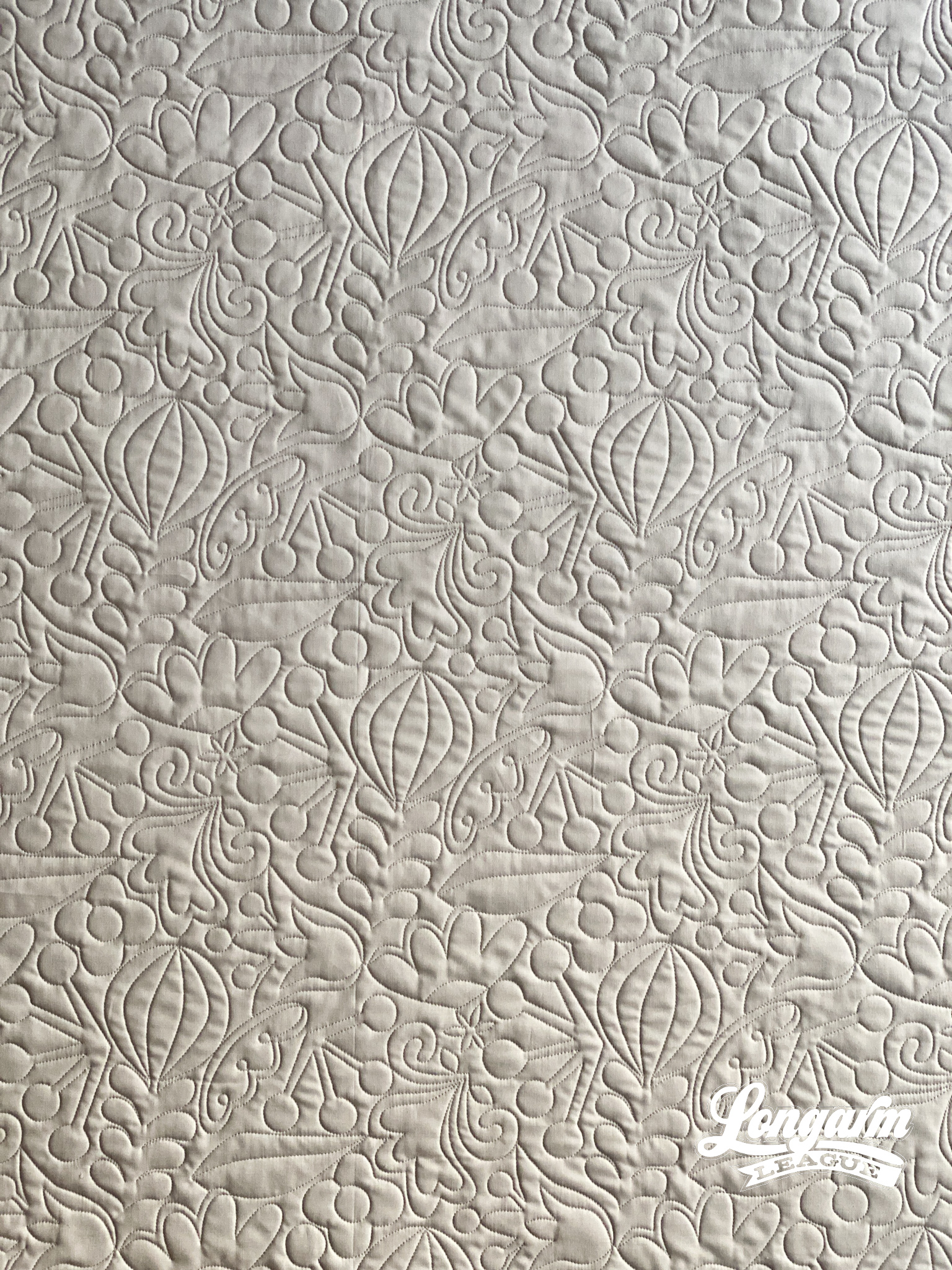
I was captivated by the idea of making fanciful floral shapes that looked "illustrated"—if you will—with no particular directionality.

I think this design would look great on quilt tops for kids, or for modern tops, or even quilt tops with a Scandinavian theme, if you'll allow me to get super-specific about it and my influences.
I'll also state the obvious and say this digital pantograph design could also be great with floral-themed quilts! Or with quilts using a lot of solid fabrics or negative space. You know... to add some extra interest and texture.
As a digital pantograph designer, I like to disguise "hard rows" whenever possible. I experimented wit...
Orange Dream Digital Quilting Design
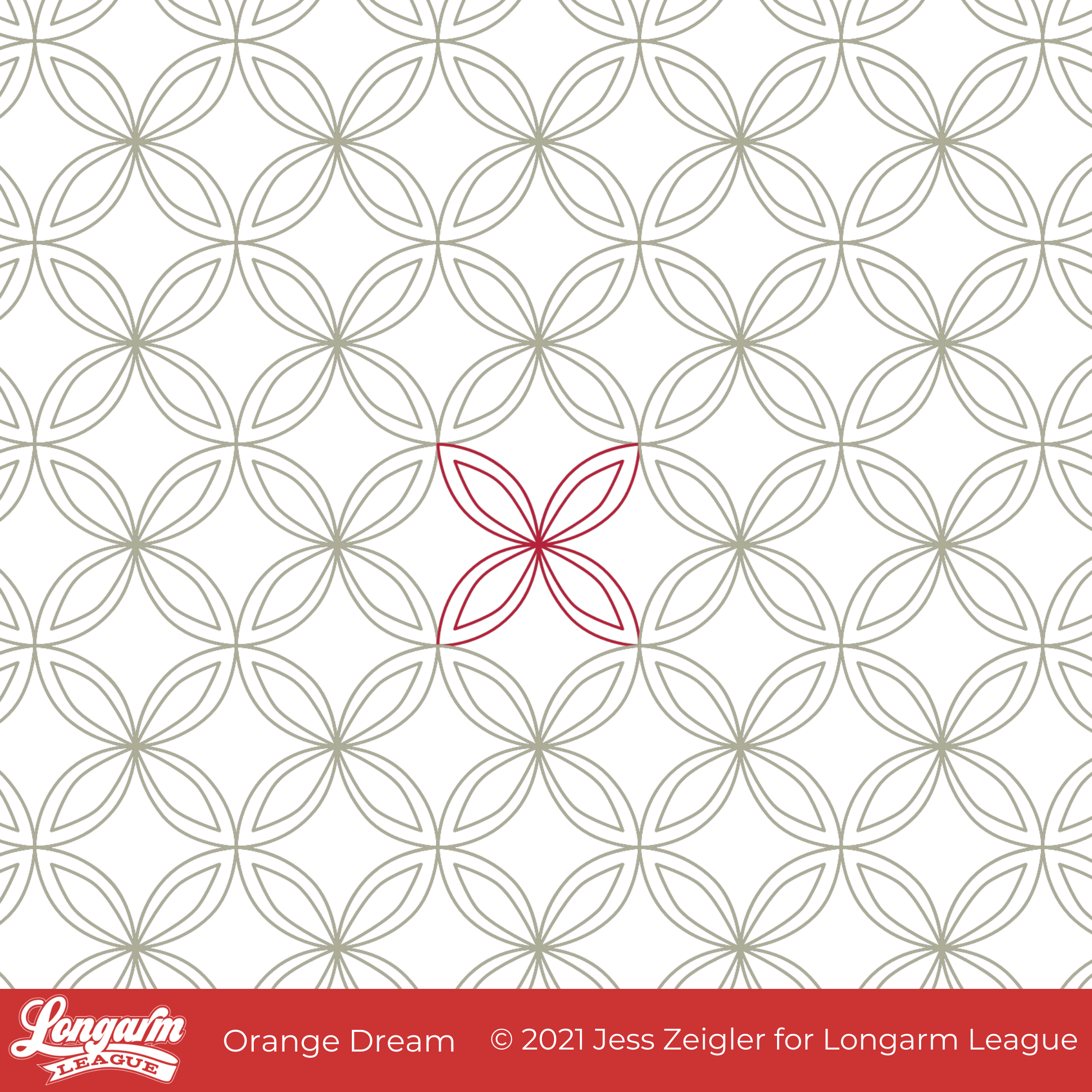
I love a classic Orange Peel moment! This design is a simple variation on a classic that adds a touch of sass... as long as sassy and elegance can coexist.

Let's face it, one of the reasons why Orange Peel quilting works so well is because it's simple and extremely versatile.

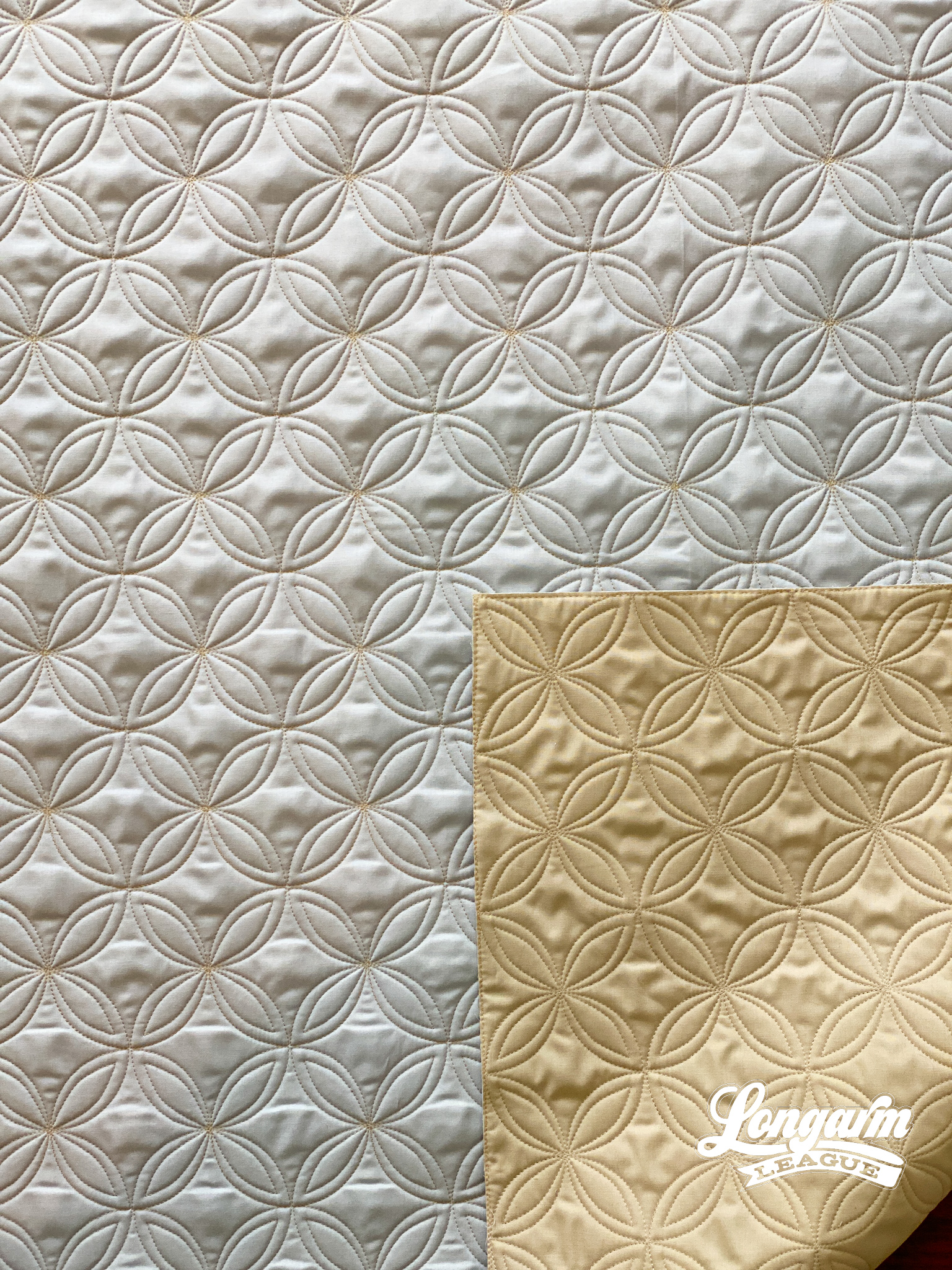
You could easily use this design on modern tops or traditional tops and it'll look great on both. In fact, I think the classic design is made a touch more modern by having the echoed "peel" within each shape. And when used on a traditional quilt top, I think that's when it could read a bit fancier.
I could also see this design lending itself well with floral-themed quilts.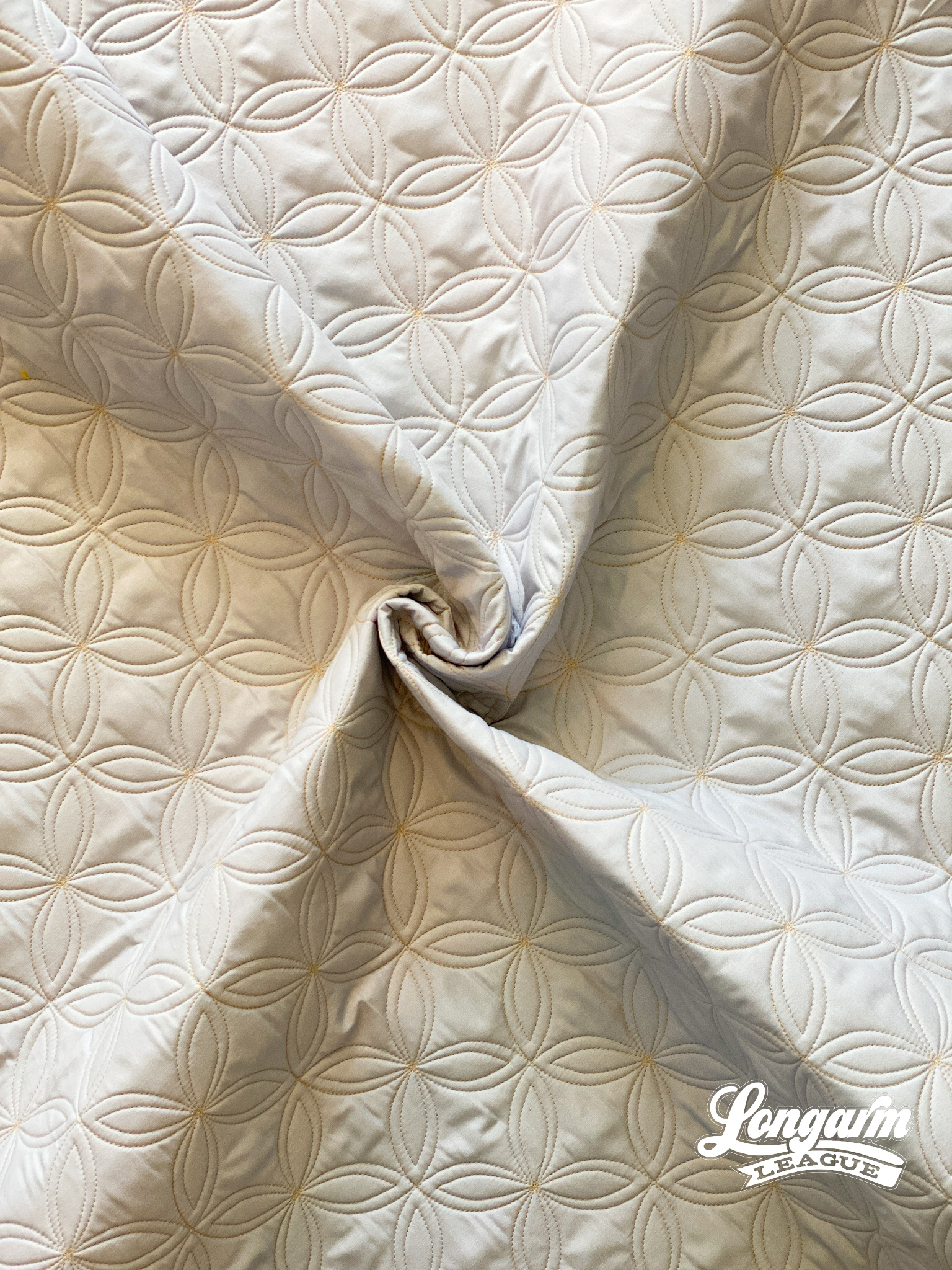
Another major benefit of this design is that it's multi-directional. It's going to look the same whether you load your top sideways or not. If you are trying to save time and capitalize on efficiency, loading the long side of the quilt to the leaders will mean advancing and re-aligning fewer times.

As for set-up, there is no o...
Feathered Spirals Digital Quilting Design

Instead of a soulless (😂) solid sample quilt, I'm so happy to share the special quilt I made for my new niece, Kate!

It had been such a long time since I'd done any sewing. I really love the entire quiltmaking process, so it was fun to get out the rotary cutter and domestic sewing machine again and work on something new.
And what better reason than a new baby in the family?

I "kept it simple" by deciding on a classic sawtooth star quilt. I picked fabrics from my stash and used the same fabric for my background throughout the quilt. I didn't need instructions because I've made this star so many times in the past. I did make myself a general "map" as I was cutting fabrics and making my stars. Feel free to use my decidedly unfancy pattern:
If you need a little more to go on than this, google sawtooth star, you'll likely find hundreds of patterns/tutorials.

Can we talk about the quilting already?! Ha - as a longarm quilter, it's my favorite part of the process.

I des...
Laverne and Shirley Digital Pantograph Designs
Meet Laverne...
and Shirley!

One's straight-laced, one's a little more adventurous. They are similar feather designs with different spines. If not sister designs, AT LEAST coworker/roommate designs. 😊
Even though it's a challenge to say Shirley and Laverne in that order, Shirley is where I want to start because that is the order of design conception.
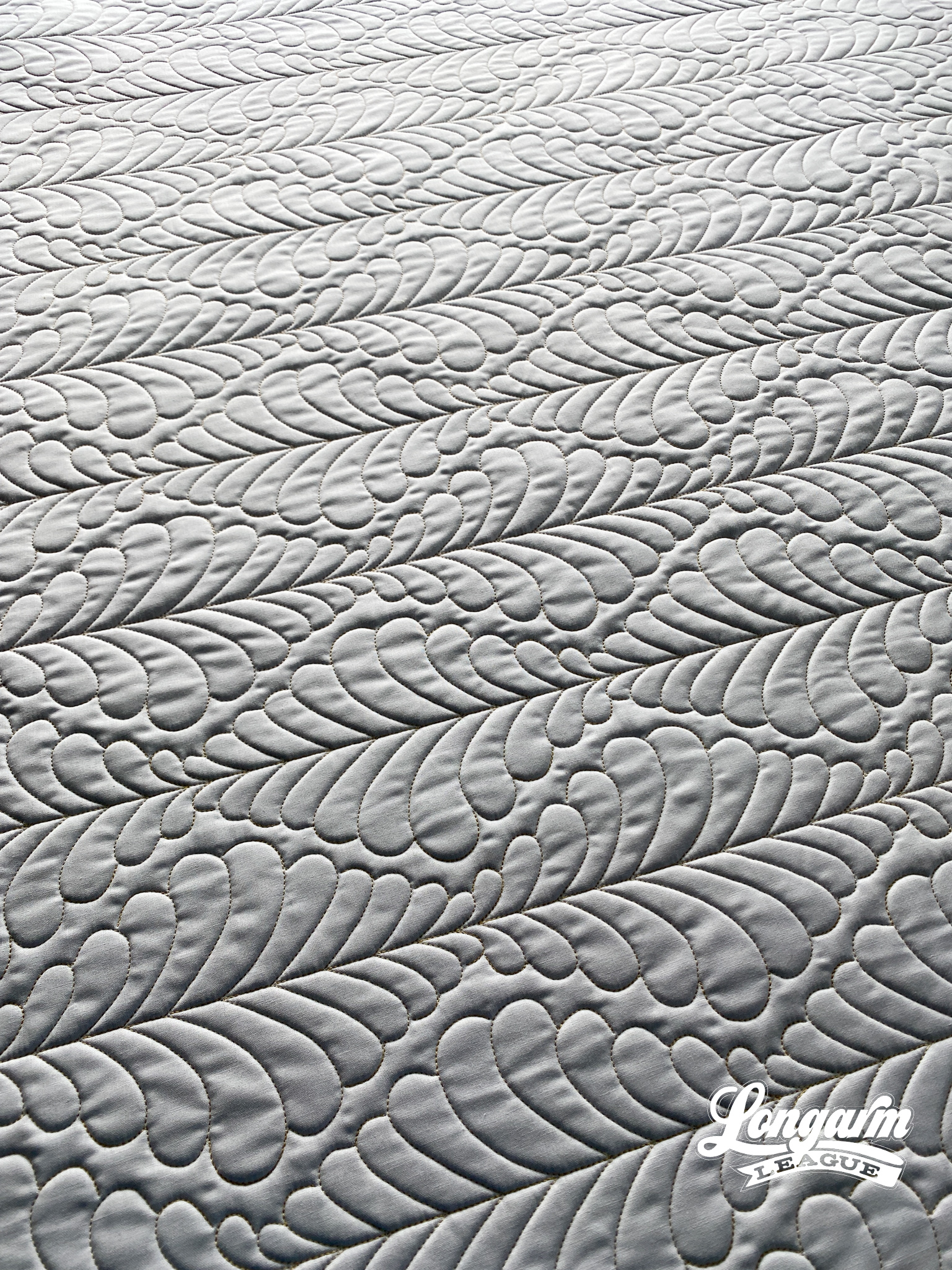
I liked the idea of the feathers nesting and interlocking within peaks and valleys of each row.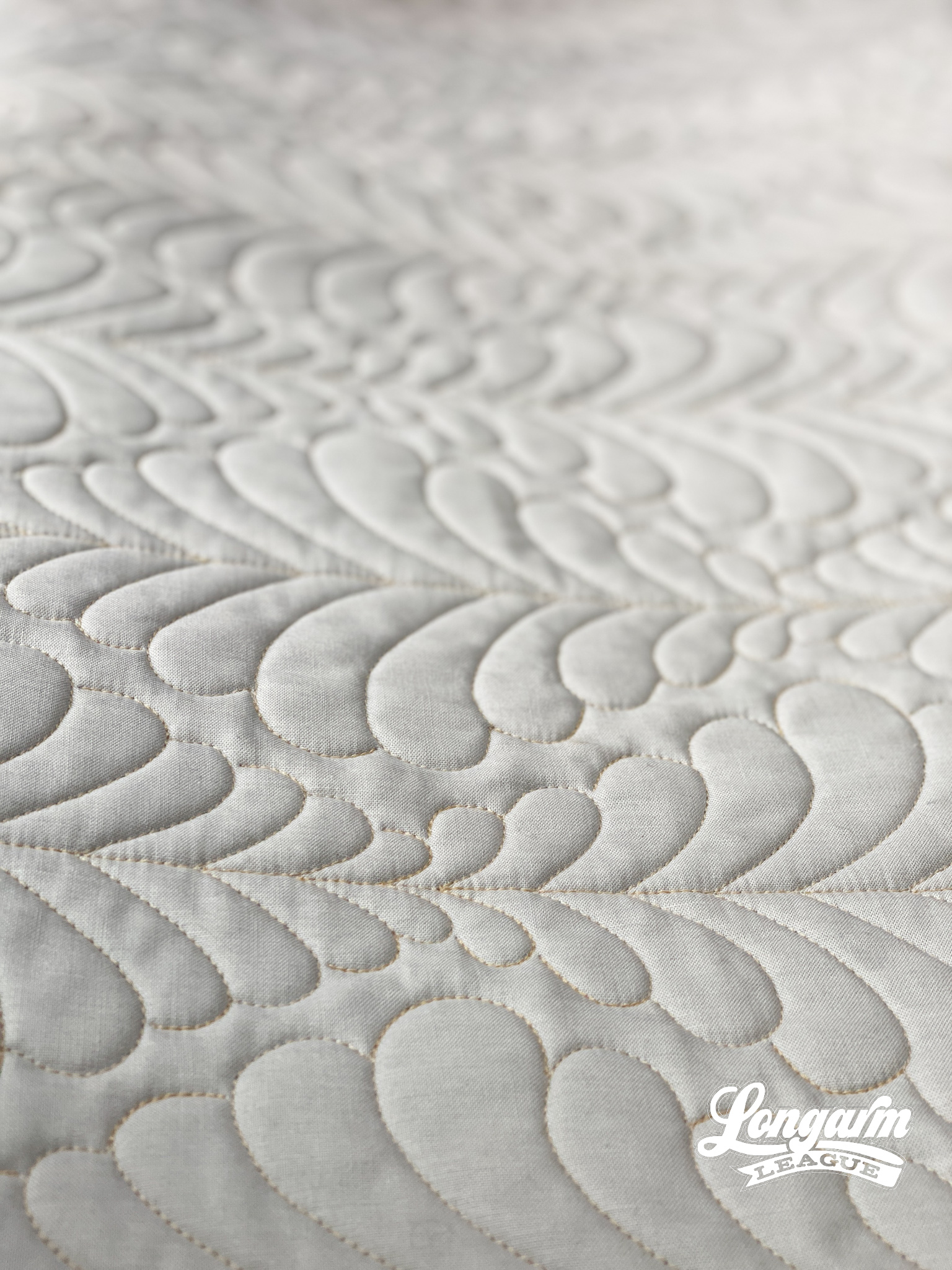
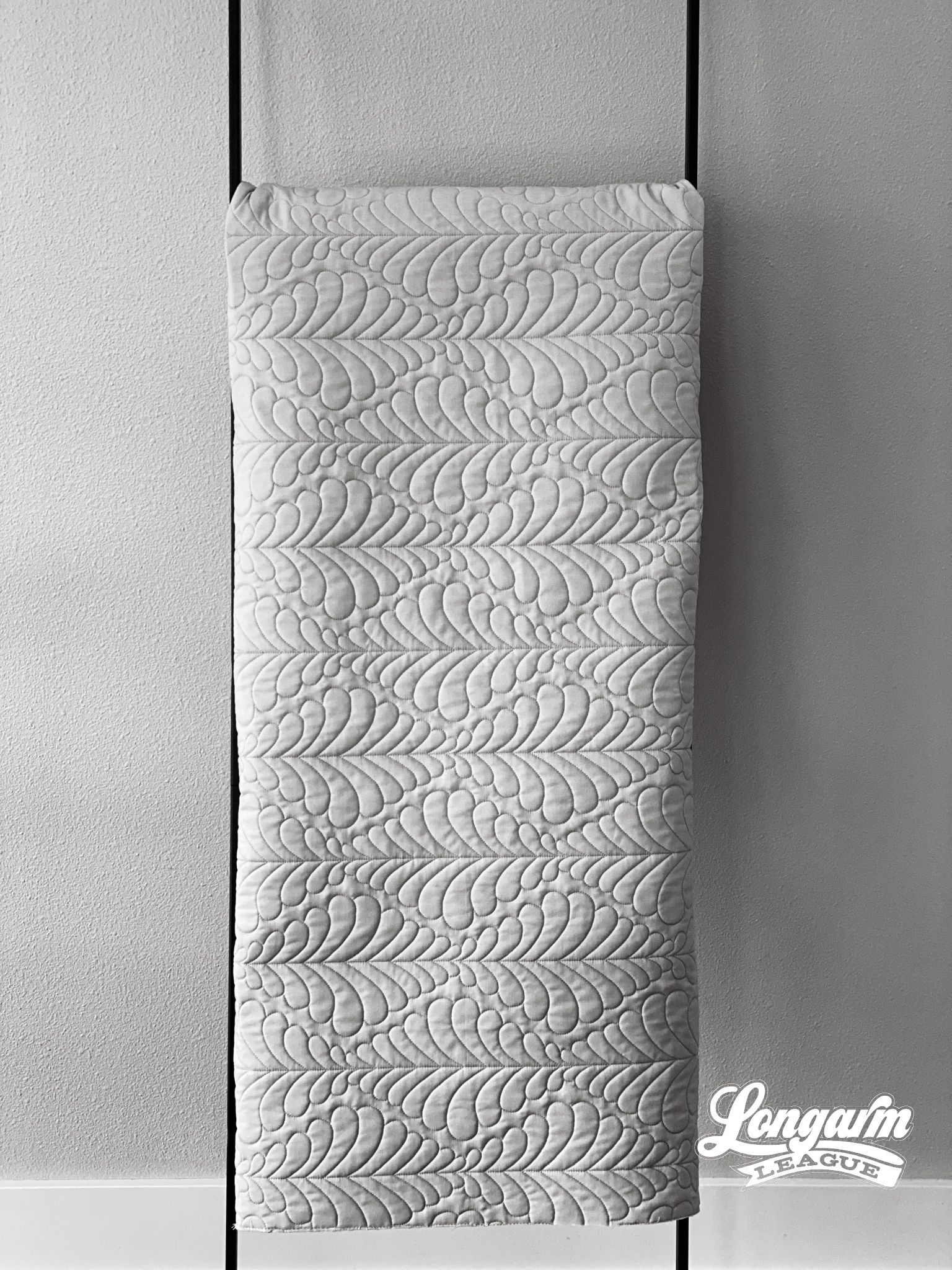
As with any design, I try to use backtracking or over-stitching as little as possible. When I would free-motion quilt, I made my feather bumps in the same fashion, but with the computer, I can "build my spine" incrementally as I progress from left to right.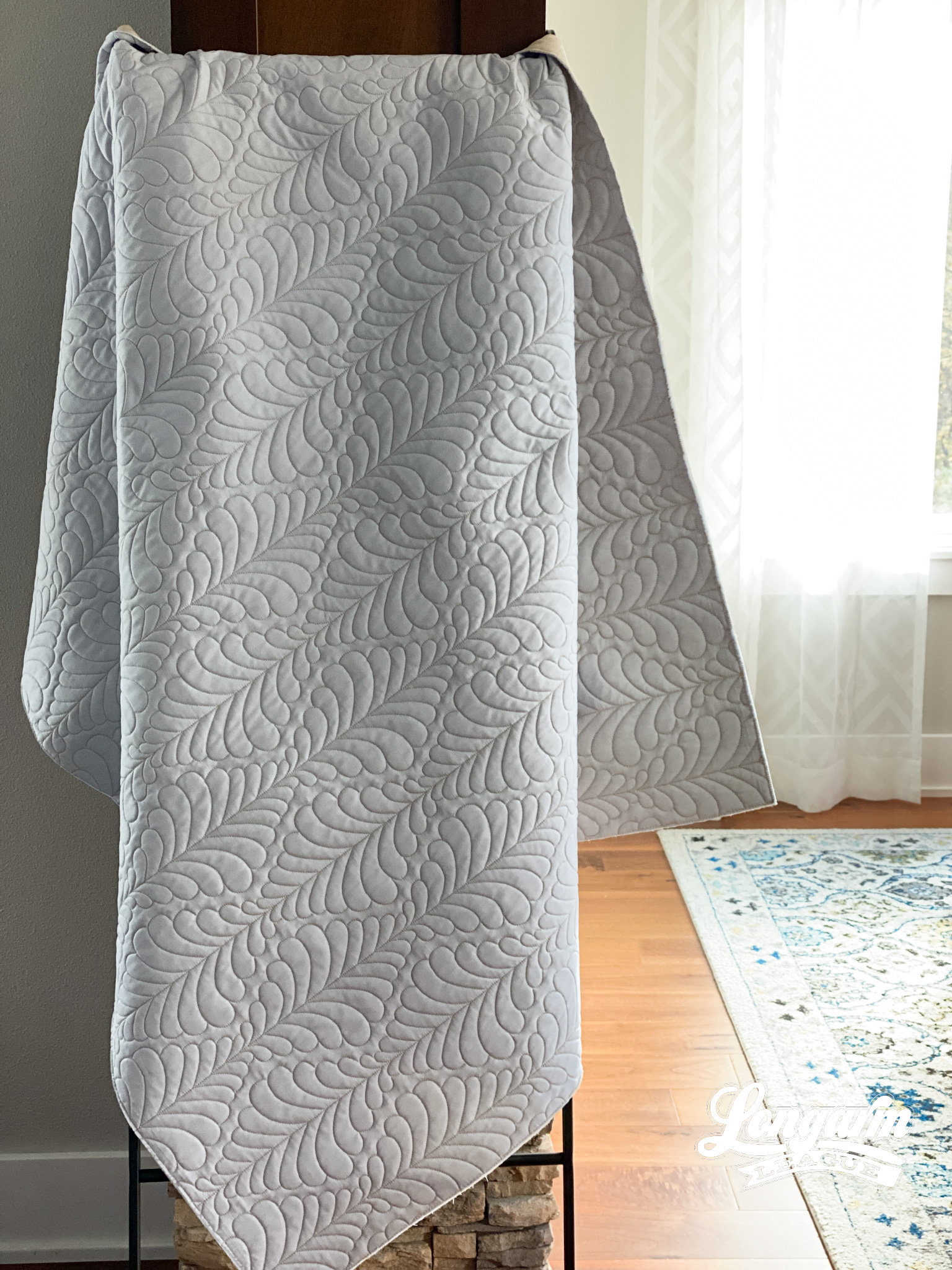

Even though the designs look very similar, they are set up differently.
The Shirley design is made up of one feather motif that repeats and the Laverne design is made of a couplet that repeats: an upstream and downstream spine. See more pictures of the Laverne design to...
Featherweight Digital Quilting Design

I love feathers.
I took my first quilting class in 2005. Not a piecing class, an honest-to-goodness beginner's machine quilting class that taught things like which materials to use, how to baste, and how to {start to} free-motion quilt.

In that class, we saw examples of real-life quilts that had been quilted. Our instructor passed around even more books of incredibly inspiring quilting. I fell for hard for feathers right then and there!
This was also the class where I heard ladies talking about long arms and I just nodded along, not having any idea about what that could be referring to. 😂


Basically, I've loved feathers ever since, in all kinds of iterations. I practiced drawing and quilting them until I got it down pat. I started out being truly the worst at it! It's not a natural thing—knowing how to create feathery shapes. Thank goodness for books and (much later) YouTube! 

As for this design, I wanted to make minimalistic-looking, plump feathers that are easy to ...
Yacht Rock Digital Quilting Design
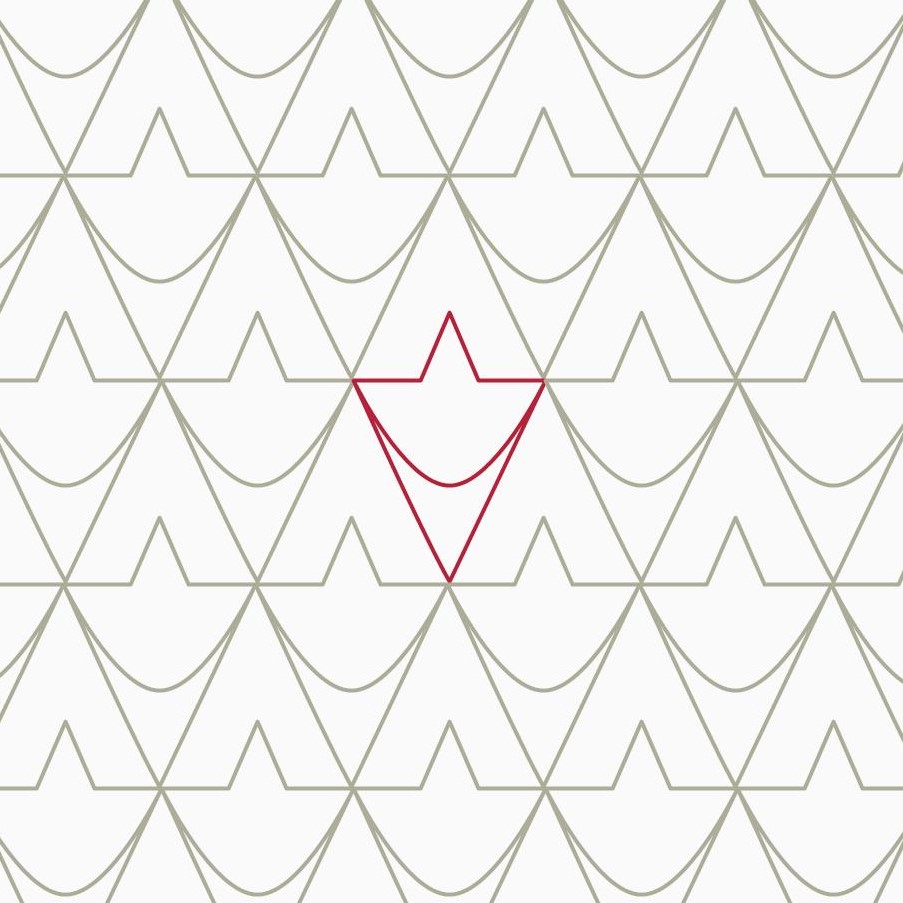
I have to be honest and say I wasn't very excited about this design until I stitched it out. The moment I did, I was smitten by the texture! In fact, this sample has remained "staged" around my home well after the pictures were taken and it continually catches my eye!
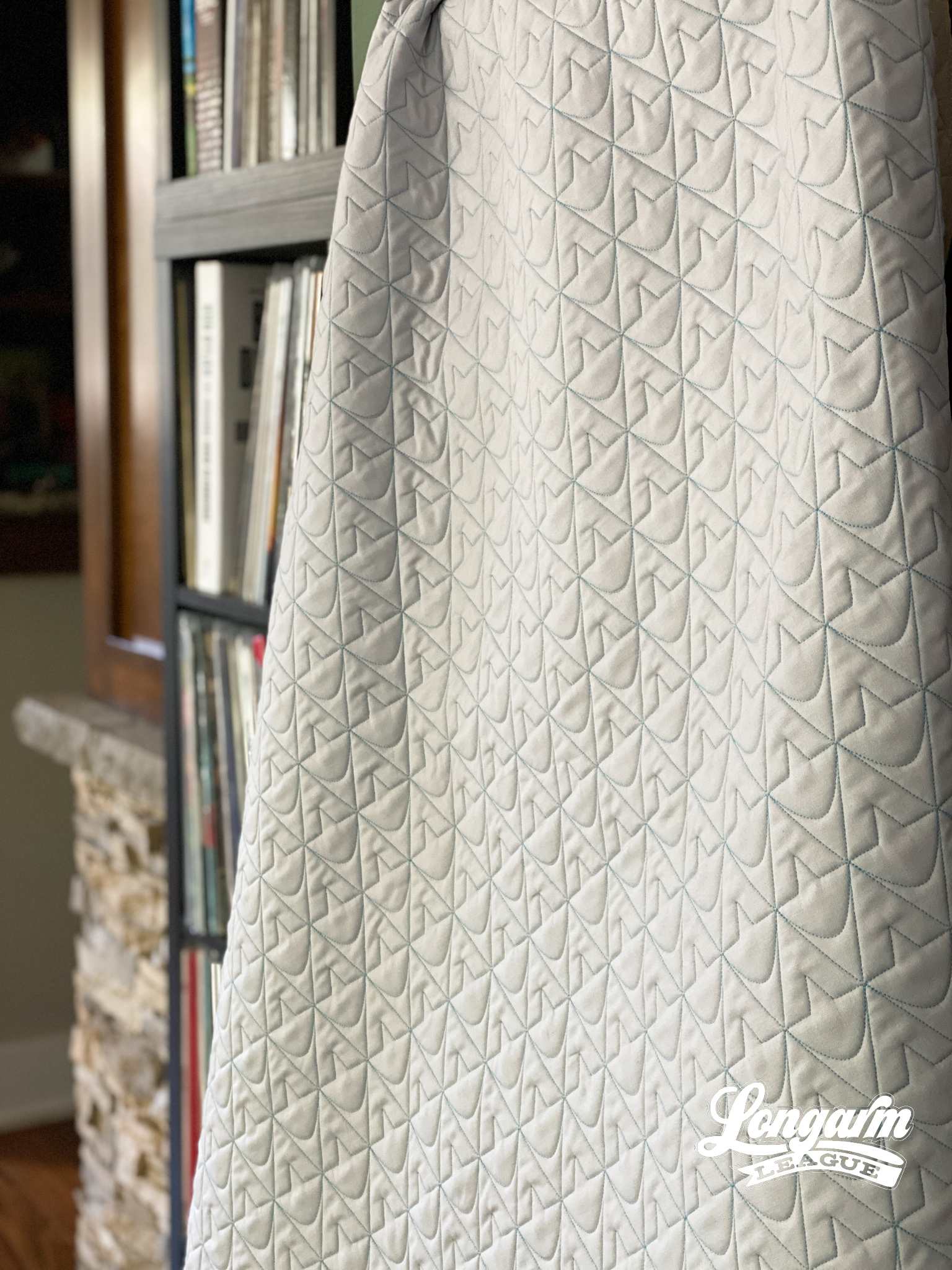
When I was designing it, I had a draft of the shape saved as Keyed in the computer... because the one repeat looked like a type of a key? I'm never sure how these things take hold, I just knew it needed a new name. Naming is hard! I want a name that is unique so that it won't be confused with other pantographs on the market and it's always nice if there's an element of the design that ties to the name in some kind of way.
I asked Josh for naming suggestions and he thought that the design looked like a little sailboat which made him say "Yacht Rock". And obviously, that had my interest right away.
Yacht Rock is a hard-to-define genre of music, although the Wikipedia entry here will help paint a picture.
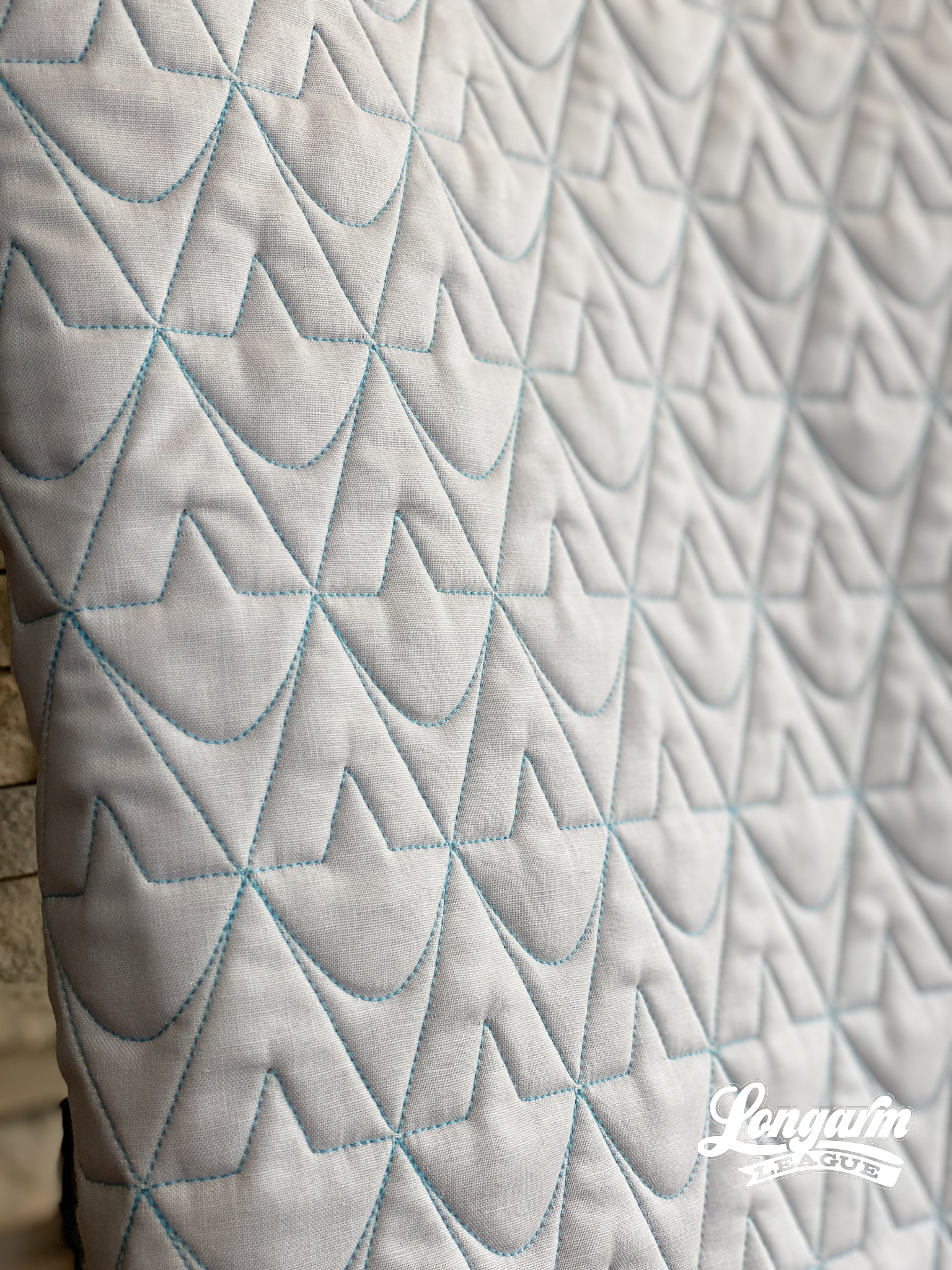
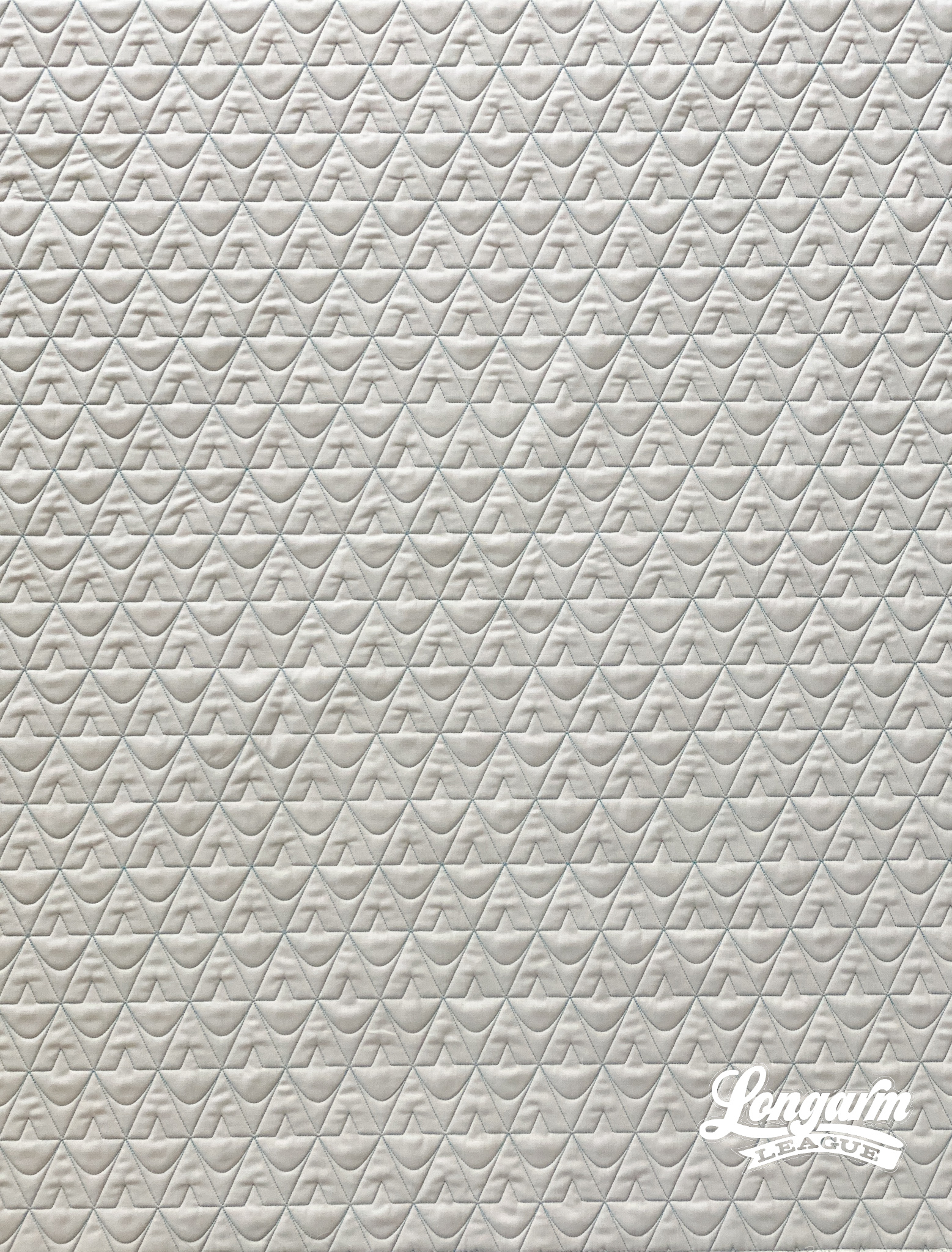
Th...
Leafy Bloom Digital Quilting Design
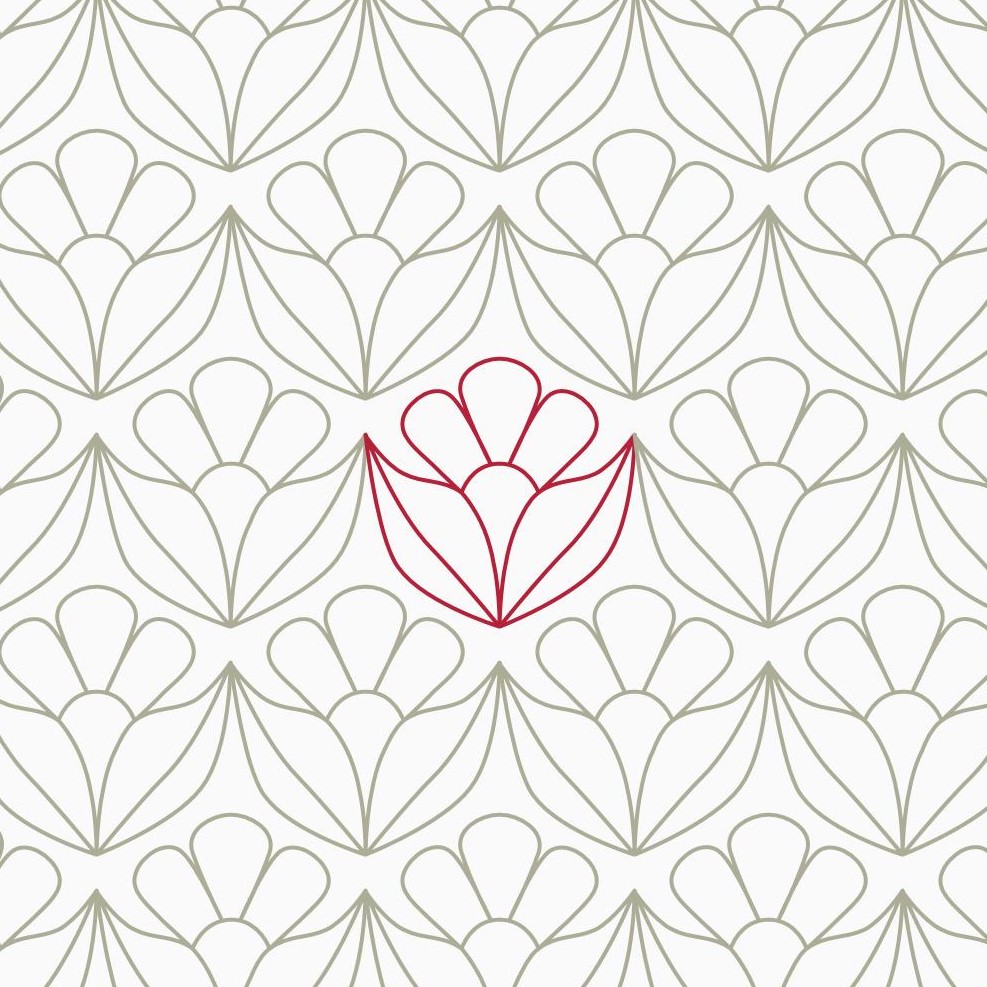
For this new design, I wanted to explore a geometric and simplified version of a flower. In general, I'm not into flowers or gardening, so I really have no idea if it looks like anything existing in nature. Also, please don't hold that against me! It feels like I'm violating a sacred quilter's code or something. Quilting and gardening seem to go hand in hand.

What I do really like, however, are simple repeatable shapes. I like the way the texture can recede into the background and be present, even when it doesn't have to be the star of the show.
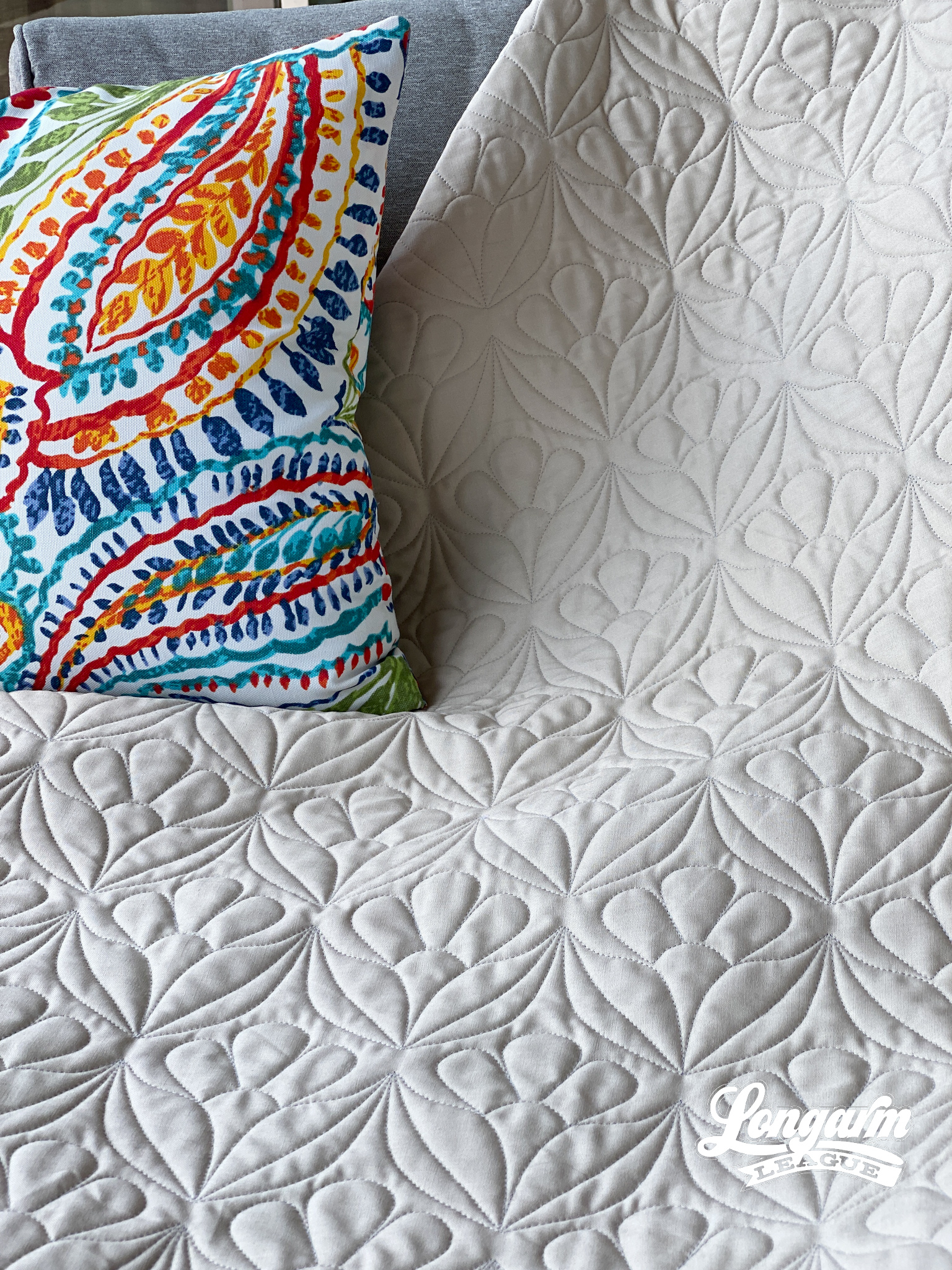

Another thing I try to watch for as a designer is that the quilting is evenly spaced, giving a nice uniform texture to an edge-to-edge design. It's the little things like this that make me happy! 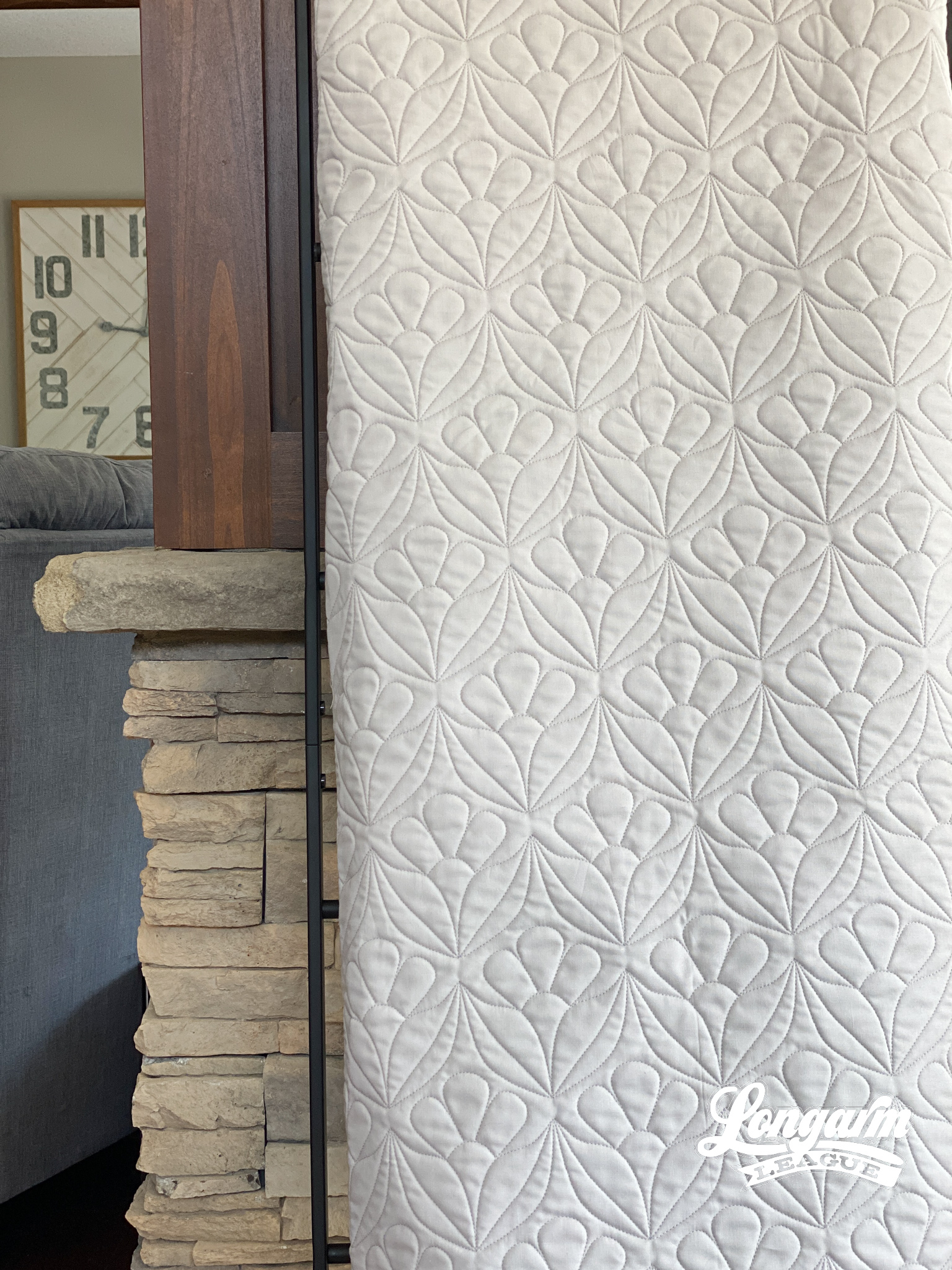

This sample quilt size is approximately 45" x 50". For reference in scaling this design, the pictures here show a row height of 3.5". If you include the gaps between the rows, the total pattern height would be 4.167". That would mean t...
What are clients willing to pay for quilting?
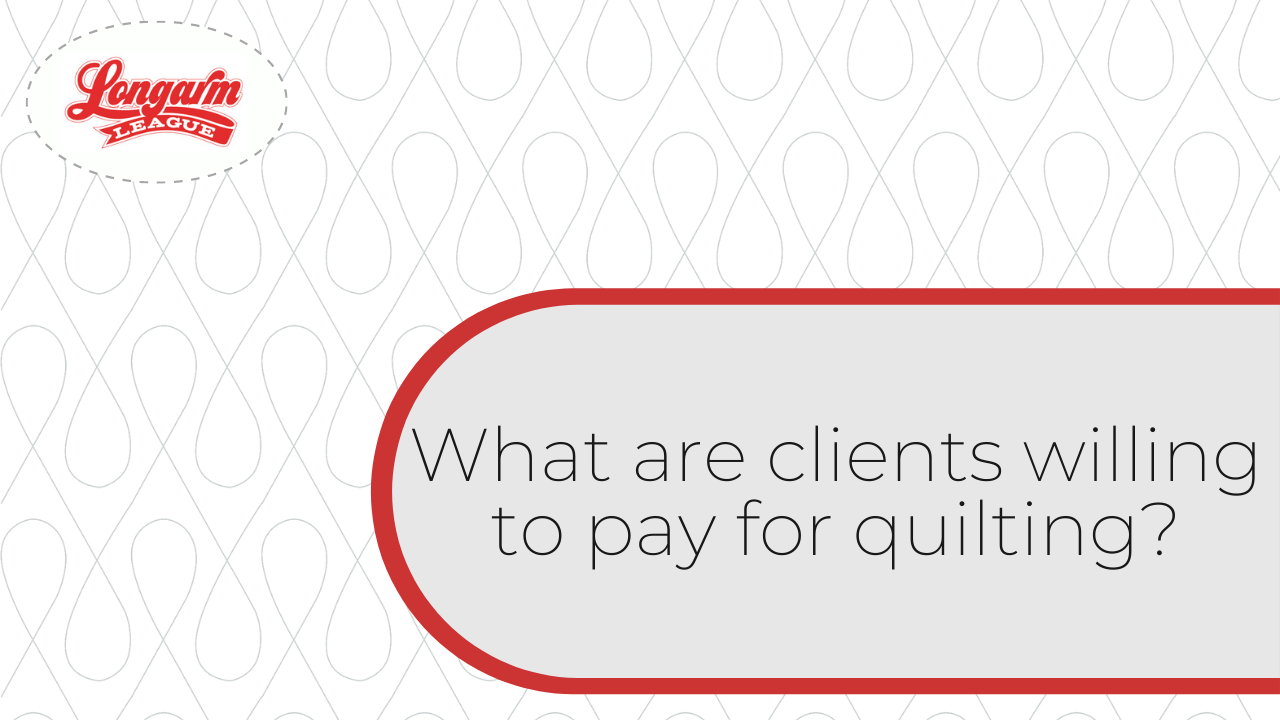

From a longarm quilter's perspective, there can be a lot of fear and anxiety in what to charge clients, especially if you are just starting a business. I was right there, too, especially at the beginning of my journey.
I just looked back at some of my invoices before I got my longarm. I started taking on miscellaneous sewing projects in 2007, and I charged someone $120 for making a twin quilt on my home sewing machine. This project would have required me to buy the fabric, batting, and thread, baste the layers on my kitchen floor with a lot of safety pins, free motion quilt it through the small throat space, trim, make and apply the binding... the whole shebang. A small saving grace is that it was a whole cloth quilt (no extra piecing required) made with solid fabrics (less expensive than some designer prints) with a simple meander requested as the quilting motif. The project cost me probably around $60 in materials (buying retail at the store with no wholesale accounts), which would...









